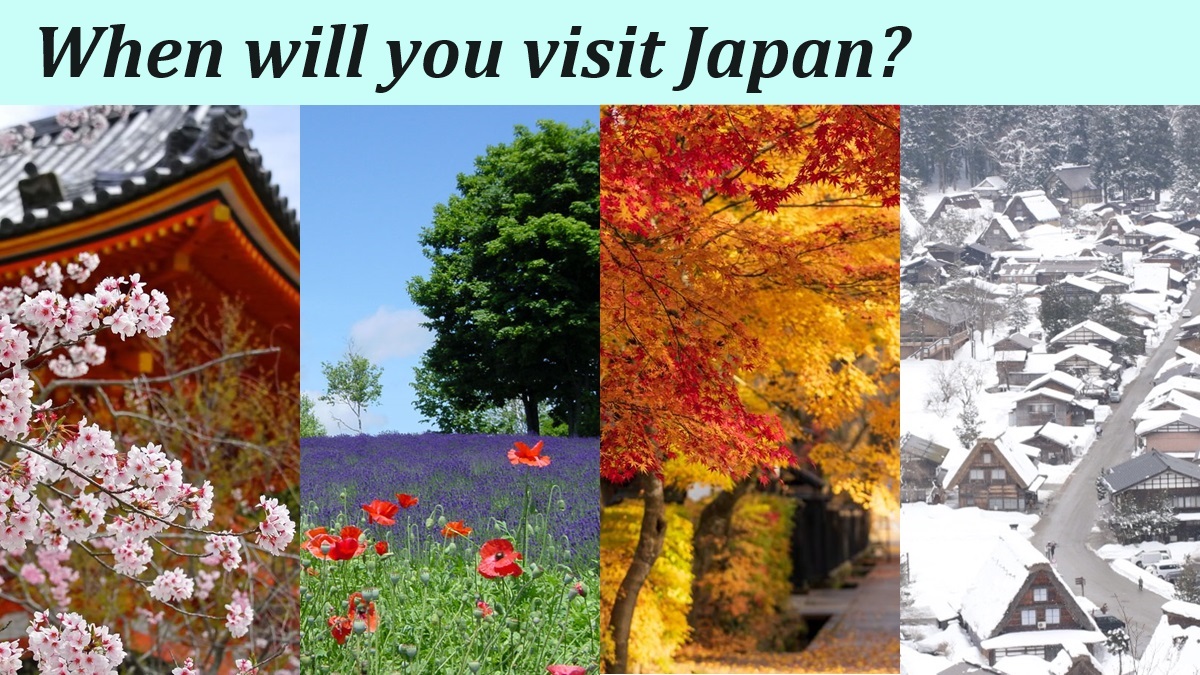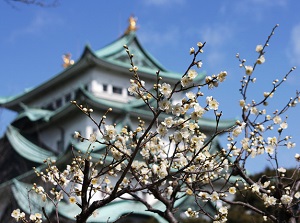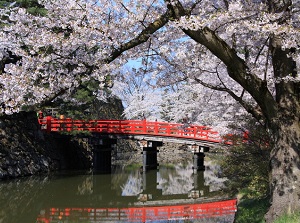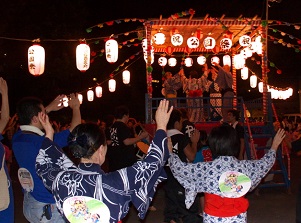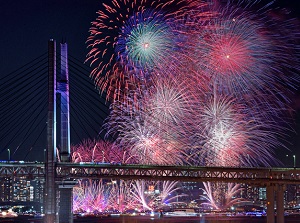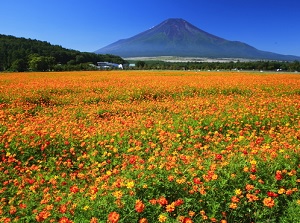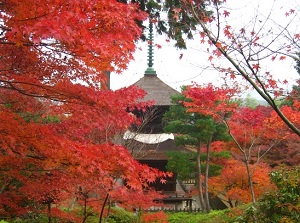When will you visit Japan?
Japan is located in the temperate zone, and has four seasons.
In any season, you can enjoy Japan.
But, summer is hotter and longer than before due to global warming.
About the climate in four seasons, please check the following page.
There are some holidays for Japanese people, and public transportations are very crowded in such period.
When you visit Japan, you should consider the periods.
Spring
Summer
Autumn
Winter
National holidays in Japan
Daytime & Nighttime
Spring (March to May)
Spring in the mainland of Japan is from March to May.
In Hokkaido Island, spring comes in April, a month later than the mainland.
In Okinawa area, spring comes in February, a month earlier than the mainland.
From March to May, the day's high temperature rises from around 15 to 25°C in the main cities.
Low pressure passes from west to east every a few days and it rains.
The days get longer day by day.
From late February to early March, ume blossoms (Japanese plum, or Japanese apricot) are popular.
Famous ume gardens are dotted throughout Japan, and we can also see the blossoms in some famous Shinto shrine and Buddhist temple.
From late March to early April, cherry blossoms (Sakura in Japanese) attract Japanese people.
Cherry blossoms are seen in any city, town and village in Japan, and there are popular park with a lot of cherry trees.
Needless to say, sakura is the symbol of Japan, and Japanese people love Sakura.
Please know about Sakura in Japan in the following page.
After Sakura, the azaleas become in full bloom in many town.
And fresh green leaves grow in the forest.
In Japan, some national holidays are set up from April 29 to May 5.
Saturday and Sunday are added, so a long vacation period for over a week is formed.
It is called Golden Week, and many people enjoy a holiday.
As a result, the transportation facilities are crowded and most accommodations are fully booked.
So, if you want to travel around Japan in the period, you should consider the condition in Japan.
Summer (June to August)
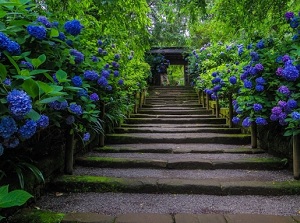
Hydrangeas in Meigetsuin temple (Kamakura city) in June
From around the middle of May, the day's high temperature is often over 25°C and the climate is in early summer.
In June, the temperature is sometimes over 30°C.
But, in the mainland of Japan, there is a rainy season named Tsuyu (梅雨) between spring and summer.
Cool and dry air mass from northwest and hot and wet air mass from south form the seasonal rain front around Japan.
Therefore, rainy or cloudy days continue for about a month.
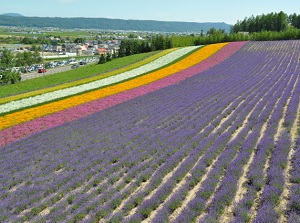
Lavender of Farm Tomita in Furano city in Hokkaido
Photo by Railstation.net
In Okinawa area, tsuyu continues from mid-May to mid-June.
In the mainland, it continues from mid-June to mid-July.
Hokkaido Island is out of the tsuyu area.
So, the climate in Hokkaido is comfortable in the period.
When you travel around Japan in tsuyu period, you need an umbrella in many days.
In addition, in the end stage of tsuyu, the amount of rainfall tends to increase and heavy rain sometimes causes disasters locally.
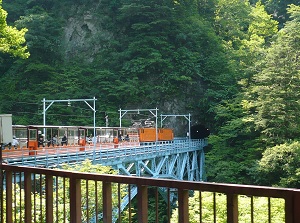
Kurobe Gorge Railway in midsummer
In Okinawa islands, tsuyu finishes in mid-June.
Then, in the middle July, tsuyu finishes from south to north in the mainland.
The sunlight becomes very strong, and hot and humid midsummer starts from the day.
In the mainland, the temperature is over 30°C every day and is over 35°C in some days.
But the temperature in Okinawa is a few degrees lower than the mainland.
The inside of most facilities, buildings, trains and buses, etc. are air-conditioned and cool.
But you must be aware of heat stroke outdoors.
And severe storm "typhoon" comes to Japan a few times in summer.
Please check the page about Typhoon .
If you have been caught in a typhoon in Japan unfortunately, you may be forced to change your schedule.
In Japan, the day of August 15 is called Obon.
Japanese people have believed that ancestral spirits return their home in the period according to Shinto and Buddhism.
Therefore, many families in the big cities return to their hometown.
They visit their ancestors graves and spend time with their family.
Between early August and around Obon, Bon dance festival are held in the evening in each town and village.
The people in the area dance freely and anyone can join the dance.
And large‐scale fireworks displays are held in major cities in the period.
They are very attractive events in midsummer.
During a few days before Obon, all trains, airplains, roads from Tokyo area are very crowded.
For a few days after Obon, the transportations toward Tokyo area are very crowded.
If you travel around Japan in the period, you will have a hard time.
Autumn (September to November)
It is still hot in the early September.
The day's high temperature falls finally below 30°C in the middle of September.
But in Hokkaido, the day's high temperature is below 25°C and falls below 20°C in the late September.
Hokkaido is already in autumn.
In this period, there is a rainy season between summer and autumn.
It is from around the late September to early October.
The rainy days are not so continuous, and drizzling rain mainly falls.
So, this rainy season is not called "tsuyu".
In Hokkaido and Okinawa area, the rainy season doesn't appear clearly.
So, we have a lot of fine days in Sepermber.
In addition, one or two typhoons strike Japan in September every year.
You should check the information of typhoon when you visit Japan in September.
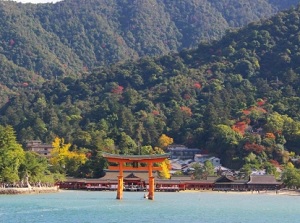
Itsukushima Shrine in autumn
October is the good month to travel around Japan.
In the mainland, the day's high temperature falls from around 25°C to below 20°C in the end of October.
The temperature in October is similar to May, but the humidity is lower than May.
So, it is very comfortable and the color of the sky is clearer than spring.
But, the time of sunset is 1.5 to 2 hours earlier than May.
Because the altitude of the sun is very lower than May, shadows are long and the shade of the scenery is clear.
The climate in November is similar to October, and is also a good season for travel.
At the end of November, the day's high temperature is around 10 to 15°C.
Autumn leaves are seen from early October in Hokkaido, from late October in Tohoku region.
In other mainland, autumn leaves are seen from late November to early December.
In Hokkaido, it begins to snow from late October.
The top of Mount Fuji is covered with snow around the same time.
But, in the mainland, the period from late November to early December is in late autumn.
Winter (December to February)
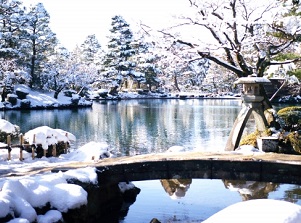
Kenrokuen garden in Kanazawa city in winter
In December, Hokkaido and the north part of Tohoku region are already in midwinter.
The day's high temperature is below 5°C.
In the mainland, Decemeber is the season from the end of autumn to early winter.
In Okinawa area, it is similar to the season of spring or autumn in the mainland.
The climate in winter varies depending on the region.
Honshu Island is long and mountain ranges run on the center of the island.
Very cold wind blows from the northwestern continent, and it absorbs much water vapor from the Sea of Japan.
When the wind crosses the mountain range, dense clouds are developed and much snow falls.
After crossing the mountain range, dry wind blows down.
In the result, in the midwinter, Hokkaido and the areas along the Sea of Japan have much snow, but good and dry weather continues in the areas along the Pacific Ocean side.
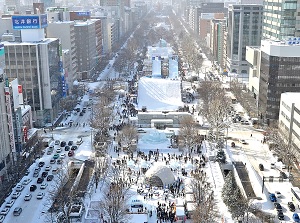
Sapporo Snow Festival in February
For example, in Sapporo which is the largest city in Hokkaido, the depth of accumulated snow is 40 to 80 centimeters in winter.
The depth of snow in Japan is one of the largest in the world.
On the other hand, snow falls only in a few days a year in Tokyo, Nagoya, Kyoto, Osaka, Hiroshima, Sendai, etc.
Midwinter is in January and February.
In Hokkaido, the day's high temperature is below zero.
In northern Tohoku area, it is below 5°C.
In the other areas of mainland, it is 5°C to 10°C.
Ski resort is opened from early December in Hokkaido and the north part of Tohoku region and from late December in the other area.
From late January to early March, drift ice (Ryûhyô) fills the Okhotsk Sea on the northeast coast of Hokkaido.
It is a unique nature.

The new year's visit to Naritasan Shinshoji temple
By the way, Year-end and New Year holidays are the most special period for Japanese people.
The period is basically from December 29 to January 3, and the three days in January is called Shôgatsu.
Many families in the big cities return to their hometown and greet the New Year.
And, in the three days of the New Year, over 90% of Japanese people visit any Shinto shrine or Buddhist temple and pray for their great happiness in the new year.
Like Obon, during the days in December, all trains, airplains, roads from Tokyo area are very crowded.
After Shôgatsu, the transportations toward Tokyo area are very crowded.
Many shops and restaurants are closed in the period, and most public facilities such as tourist information office are also closed.
Of course, many towns with major shrine or temple are crowded in Shôgatsu.
You can experience traditional Japanese Shôgatsu.
But, if you travel around Japan in the period, you will face hardship for travel.
National holidays in Japan
In Japan, 16 national holidays are set up.
The number is the largest in the G7 countries.
There are more holidays related to nature and auspicious turning points in life than historical memorial days.
Japanese workers have hesitated to take a holiday in the working environment.
Now, the rate of taking annual paid vacation is around 60%.
So, the Japanese government has increased new national holidays.
In addition, to make consecutive holidays, some national holidays are set up not on fixed date but on Monday.
And, if a national holiday is on Sunday, the alternative holiday is set up on the next weekday.
So, 3 day vacation of Saturday, Sunday and Monday comes 4 or 5 times a year.
The national hoidays in Japan are the following.
Winter
- Jan. 1 : New Year's Day
- Jan. 2nd Monday : Coming of Age Day
- Feb. 11 : National Foundation Day
- Feb. 23 : The Emperor's Birthday
Spring
- Around Mar. 20 : Vernal Equinox Day
- Apr. 29 : Showa Day (Emperor Showa's Birthday)
- May. 3 : Constitution Memorial Day
- May. 4 : Greenery Day
- May. 5 : Children's Day
Summer
- Jul. 3rd Monday : Marine Day
- Aug. 11 : Mountain Day
Autumn
- Sep. 3rd Monday : Respect for the Aged Day
- Around Sep. 23 : Autumnal Equinox Day
- Oct. 2nd Monday : Health and Sports Day
- Nov. 3 : Culture Day
- Nov. 23 : Labour Thanksgiving Day
Vernal Equinox Day and Autumnal Equinox Day are changed to the next day according to the result of astronomical observation.
Christmas and Halloween are not national holidays in Japan.
Three long consecutive holidays for Japanese people
The days from April 29 to May 5 are called Golden Week.
Four national holidays are included in the period, and Saturday and Sunday are also added.
The period is very comfortable, so it is the best tourist season in spring.
August 15 is called "Bon" or "Obon", but it is not a national holiday.
The day is believed that the soul of family's ancestors come back in Japanese religions.
So Obon vacation including the day is set up in many workplaces.
Many Japanese people return to their hometown or go on a trip.
August 13 to 16 is the most crowded period.
The period from December 30 to January 3 are usually is set up New Year vacation by tradition.
Most workplaces and public offices are closed, and many Japanese people return to their hometown or go on a trip like Obon vacation.
In above three periods, main railways, expressways, airplanes are very crowded.
And, many hotels are also crowded.
If you visit Japan in such period, your smooth travelling will be difficult.
In addition, various annual events related to national holiday are held in each season.
Please check the page.
Daytime and Nighttime
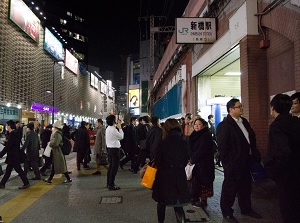
Entrance of Shinbashi station in Tokyo in the evening
Daytime
In weekday, the trains and buses are crowded with commuters and students in the morning and evening.
Especially, it is heavy around the big cities such as Tokyo area and Osaka area.
The time periods are between 7 and 9 a.m. (toward the city) and between 6 and 8 p.m. (from the city).
In Japan, the big cities are densely packed, so there are few parking spaces.
Therefore, most commuters use the public transportation.
If you move in these time periods in the cities, you will have a hard time.
By the way, Japan is located on the middle latitudes.
The length between sunrise and sunset varies with the seasons.
And Japan doesn't adopt daylight saving time.
When you visit Japan, it may be a beneficial information that you know the time it is light outside.
Nighttime
In Japan, trains and buses are basically stopped between 0 and 5 a.m. at midnight.
The trains, subways and buses aren't operated even in and around the biggest cities such as Tokyo, Osaka.
If you must move in the time period, taxi is an only transportation.
A few international airports such as Haneda and Kansai have the flights arriving in the midnight.
The limited number of buses to the city may be operated, but if you have missed the bus, you need to stay in the airport until the morning.
When you want to move to remote city, a lot of overnight express buses are operated between big cities and provincial cities.
But, by railway, only a night train is operated between Tokyo and Shimane Prefecture and Takamatsu in Shikoku.
All night trains except above train had already been abolished because of decrease of passengers.

